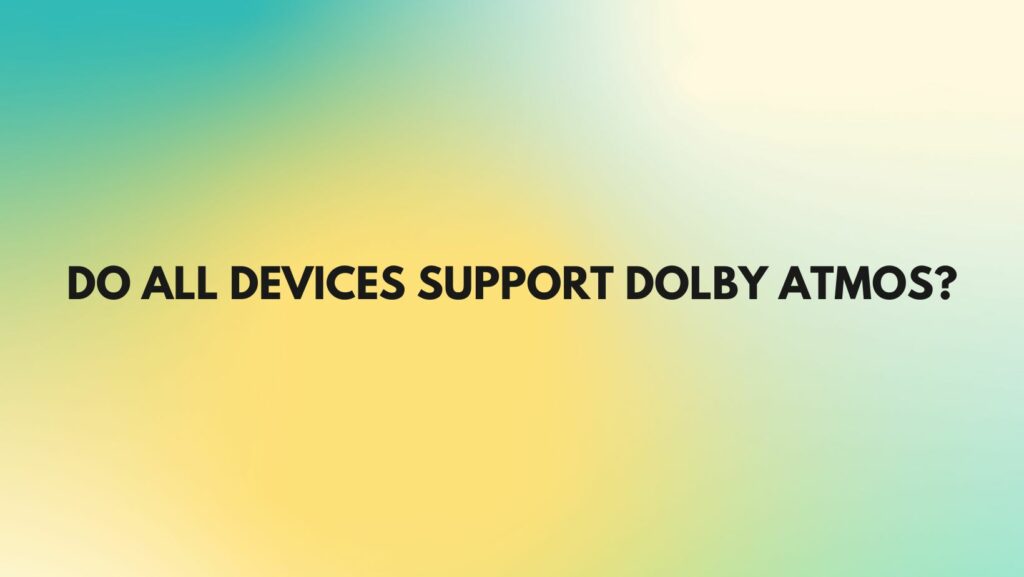Dolby Atmos, a groundbreaking technology in the realm of audio, promises a three-dimensional auditory experience that transcends traditional surround sound. However, the quest for immersive audio leads to a pivotal question: Do all devices support Dolby Atmos? This exploration delves into the intricacies of device compatibility, shedding light on the varied landscape of devices that can harness the transformative power of Dolby Atmos.
The Diverse World of Dolby Atmos Compatibility:
Dolby Atmos, designed to enhance audio experiences, has found its way into a variety of devices, ranging from home theaters and gaming consoles to mobile phones and soundbars. However, the extent of compatibility differs across devices, necessitating a closer look at the factors that influence whether a device supports Dolby Atmos.
- Home Theater Systems:
High-end home theater systems are often equipped to embrace the full capabilities of Dolby Atmos. AV receivers and dedicated speaker setups with upward-firing or ceiling-mounted speakers provide an ideal environment for creating a three-dimensional soundscape.
- Gaming Consoles:
Gaming consoles, such as Xbox Series X and PlayStation 5, have embraced Dolby Atmos to enhance the gaming experience. Headphones and soundbars compatible with these consoles can also benefit from the immersive spatial effects of Dolby Atmos.
- Soundbars and Speakers:
Soundbars and speakers equipped with Dolby Atmos technology are designed to deliver a more expansive audio experience. These devices often feature upward-firing drivers or speaker arrays to simulate height channels, creating a virtualized three-dimensional soundstage.
- Mobile Devices and Smartphones:
Some premium smartphones and tablets support Dolby Atmos for headphone use, offering a more immersive audio experience for users on the go. This compatibility enhances the audio quality of movies, music, and games when using compatible headphones.
- Streaming Services:
Popular streaming services, such as Netflix and Disney+, have embraced Dolby Atmos support for select content. Devices like smart TVs, streaming media players, and Blu-ray players with Dolby Atmos compatibility can unlock the immersive audio experience when streaming supported content.
Considerations for Dolby Atmos Device Compatibility:
- Device Settings and Configurations:
The availability of Dolby Atmos on a device often depends on specific settings and configurations. Users may need to navigate through device menus to enable Dolby Atmos functionality, especially in the case of gaming consoles and streaming devices.
- Content Optimization:
The full impact of Dolby Atmos is realized when content is optimized for this technology. Checking for Dolby Atmos support in movies, music, and games ensures that the device can fully capitalize on the immersive audio capabilities.
- Firmware and Software Updates:
Regular firmware and software updates play a crucial role in maintaining compatibility with Dolby Atmos. Ensuring that devices are running the latest updates helps address potential issues and optimizes performance.
Conclusion:
While Dolby Atmos has found its way into a diverse array of devices, not all devices universally support this technology to the same extent. Understanding the compatibility landscape and exploring the settings and configurations specific to each device is key to unlocking the immersive potential of Dolby Atmos. As the audio technology landscape continues to evolve, the promise of a three-dimensional auditory experience may become increasingly accessible across an even wider array of devices, offering enthusiasts a richer and more immersive audio journey.


